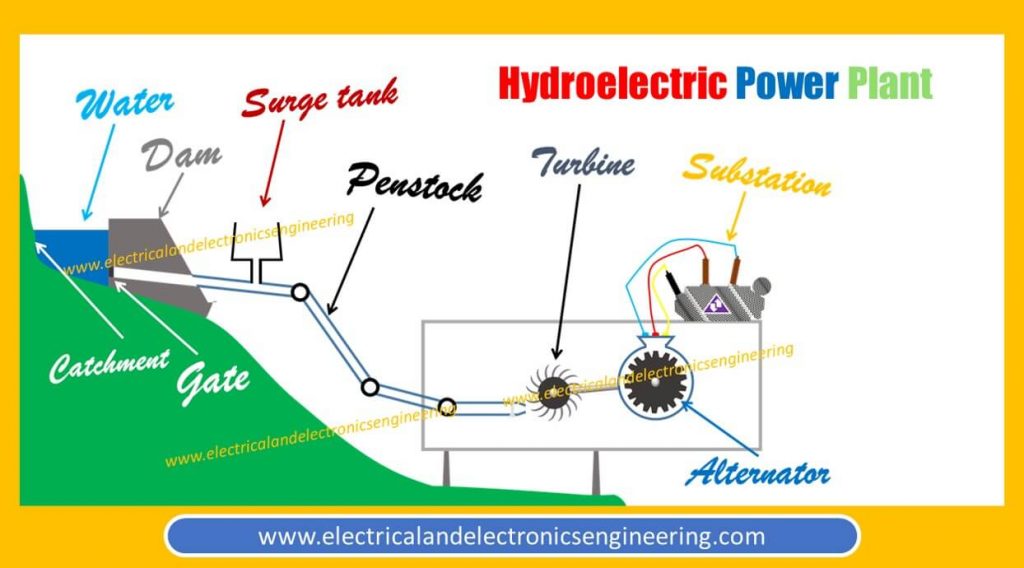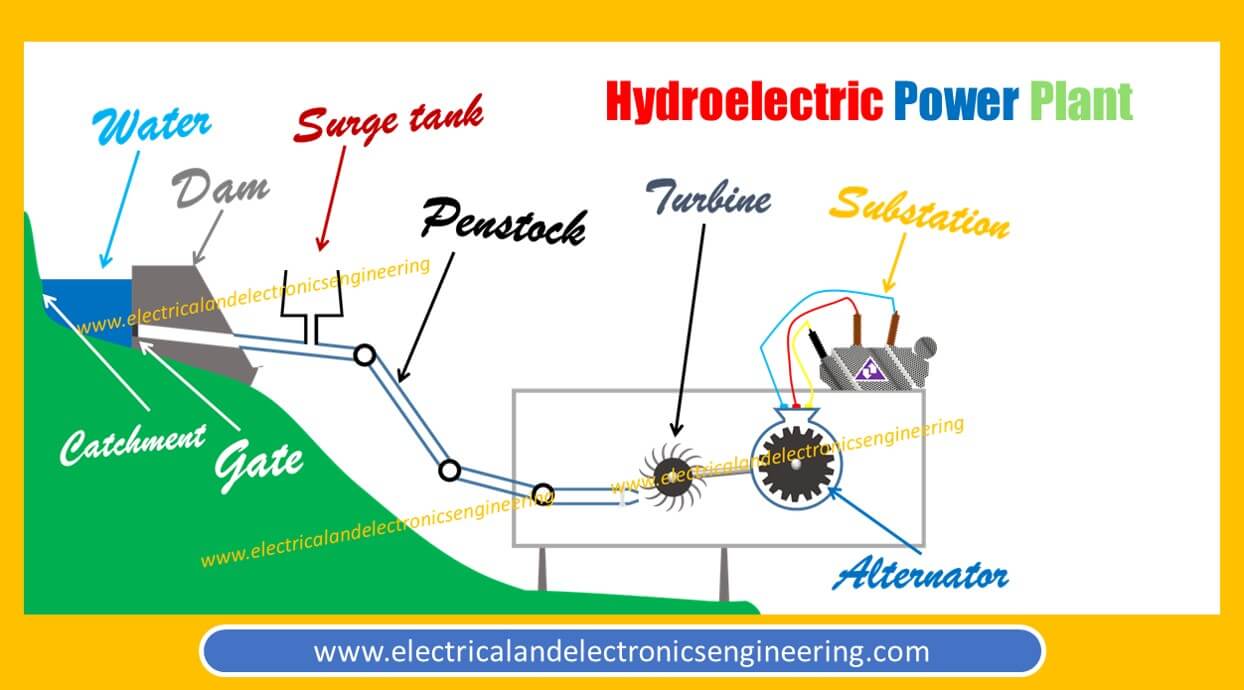The hydroelectric power uses the potential energy of water for generation of electric power. Hydroelectric power plants are constructed in hilly areas far away from populations. This post illustrates the basic construction and working of a hydroelectric power plant.
Working of Hydroelectric Power Plant
Hydroelectric power plants the water is stored at a certain height. Head (height) is provided to water by constructing a dam in mountains or across a river. Water is led from the top down to the turbines. The turbine converts hydraulic energy into mechanical energy. The turbine is synchronized with the alternator which produces electrical energy at its output. A step up transformer connects next to the alternator which steps up the generated power for transmission purposes.
Construction

- Catchment area: The catchment area is used for the collection of water. Usually, the surrounding mountains serve the purpose of catchment
- Dam: The concrete structure which retains the water flow
- Penstock: The water from the dam is brought down in penstock and leads to turbines
- Surge tank: Water travels from top to down in the conduits. Such conduits can either be open or closed. In case of closed conduits, there is a chance of bursting of conduits due to excessive pressure of water, A surge tank is installed so as to take the water in case of sudden stoppage
- Turbine: The mechanical structure which converts potential energy of water to mechanical energy, water in penstock comes down and hits the turbine blades
- Alternator: The alternator or synchronous generator whose rotor is synchronized to the turbine.
